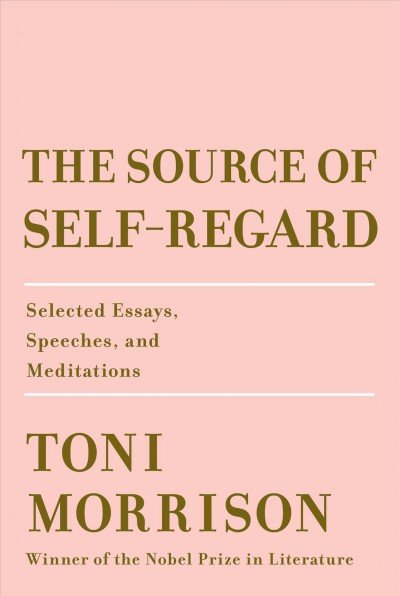Even though the essays, speeches, and meditations in Toni Morrison’s most recent nonfiction collection were written over the course of four decades, The Source of Self-Regard speaks to today’s social and political moment as directly as this morning’s headlines.
Morrison turns her penetrating analysis on the mass movement of people across the globe, foreigners and foreignness, and what it means to be “exiled in the place one belongs.” She takes on racism—in the media, society and American literature—and examines how, step by deliberate step, nations move towards “its succubus twin fascism.” Devotees should be happy to know that the Nobel laureate also delves into her own artistic process in addition to exploring the work of the painter Romare Bearden, theater director Peter Sellars, and writers ranging from Toni Cade Bambara to Chinua Achebe to Herman Melville. In short, you can expect virtually every entry in the collection, whether it was written in the 1970s or in this century, to feel strikingly relevant today.

Perhaps intentionally, the book’s structure helps underscore the timelessness of its pieces since the work is arranged by theme rather than chronology. The first of three parts is “The Foreigner’s Home,” which concerns itself with the threats of globalization and our unhelpful compulsion to demonize and ostracize the “other.” It opens with a moving prayer to those who died on Sept. 11 and, in its haunting power, is reminiscent of Morrison’s fiction.
The remaining sections also begin with recognitions of the dead, and a tender, self-reflexive tribute to Martin Luther King Jr. introduces the interlude, “Black Matter(s).” The primary focus on the interlude is the historical and current role of Africanism, a term Morrison uses to refer to white Americans’ “collective needs to allay internal fears and rationalize external exploitation… a fabricated brew of darkness, otherness, alarm and desire.”
A poignant eulogy to novelist and playwright James Baldwin opens the final part of the book, “God’s Language.” This section illuminates both Morrison’s work and the art of others, addresses the inevitability of cross-genre inspiration and examines the role of the artist in society. It should be noted, however, that the author’s central themes are so connected that each spans the entirety of the collection.



